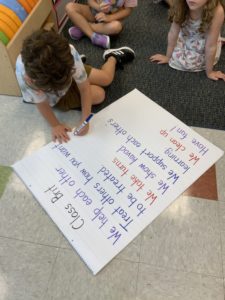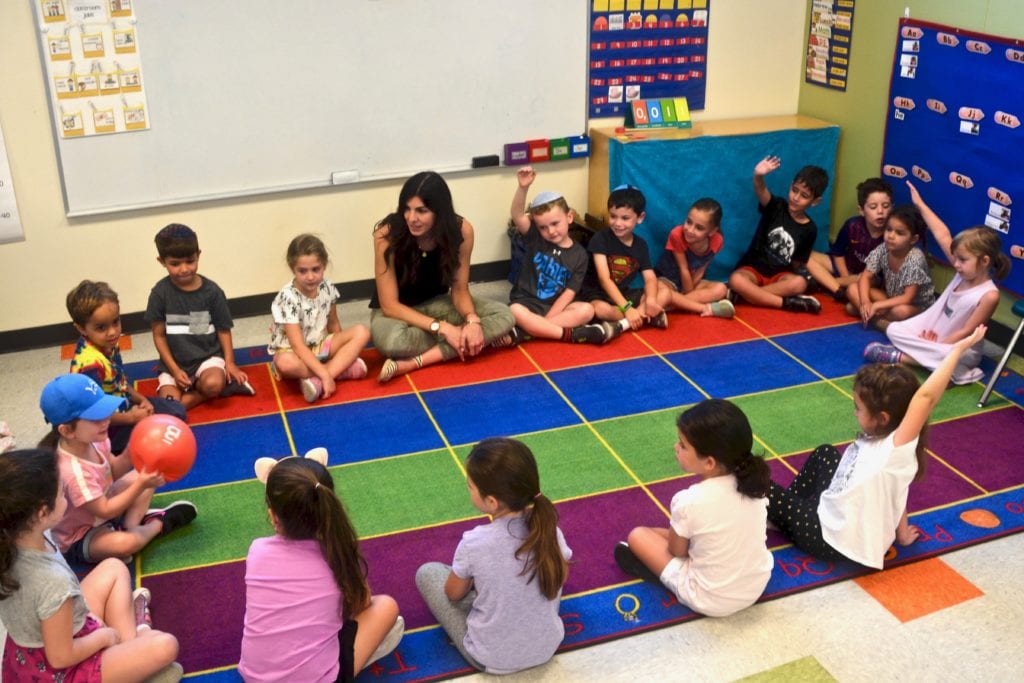Responsive Classroom

At Pardes Jewish Day School, we embrace the Responsive Classroom model which emphasizes the integration of academics with critical social-emotional skills. This fosters an environment where students can do their best learning and become prepared to be successful contributors to the 21st century workforce, as well as to their communities.
Responsive Classroom is not a single class or special subject at Pardes. It is fully integrated into our curriculum and prevalent in every student’s day. Our teachers reinforce critical social skills such as communication, collaboration, and flexibility within each and every subject. Students are expected to listen and incorporate their peers’ ideas, manage differing work styles, navigate disagreements, and depend on each other for a collective outcome.
This evidence-based practice has been used for more than 40 years and has been shown to improve teacher effectiveness, increase student achievement, and make for a safe, joyful school climate.
Four Essential Components of the Responsive Classroom
- Interactive Modeling — a short lesson focused on a specific social skill or classroom procedure designed to give students the opportunity to analyze and practice the skill in an emotionally neutral setting. The concept of interactive modeling can be compared to a fire drill. The more we practice and prepare, the more effective and calm we will be in the face of a real situation.
In action: Third graders did an interactive modeling lesson about apologizing, where students partnered together and practiced the steps of recognizing and acknowledging when they’ve made a mistake or hurt someone’s feelings. - Teacher Language — A common language that is used by every faculty member on campus. This applies to both the words we use and our tone/approach. If we are all using the same language, our students can know what to expect from class to class and from teacher to teacher. The ultimate goal is to encourage students to be self-directed learners and active participants in their own learning.
In action: A middle school teacher recently noticed that her students have started using the Responsive Classroom teacher language while working together on projects. The communication has allowed conflict to give way to collaboration, and hurt feelings to open, honest discussion. - Logical Consequences — We embrace a “you break it, you fix it” mindset which drives our response to maladaptive behaviors. With this approach, consequences are behavior-dependent, and are more effective in bringing about sustainable behavior change. Logical consequences are an essential feature of effective social-emotional learning.
In action: When a student is unkind to a peer, he or she may miss out on some socializing time and use that time to generate ways to mend the relationship. - Energizers and Brain Breaks — Energizers (Lower School) and Brain Breaks (Middle School) ensure that students are able to remain engaged in active learning throughout the day. They are short breaks during academic lessons used to refocus and reconnect.
In action: A favorite fourth grade Energizer is called “Snowball.” The teacher poses a question and students write their answers on scrap paper. It may be a one-word reaction to a poem they’re studying or something they’re looking forward to over break. Students crumple their papers into “snowballs” and have a quick snowball fight. Finally, they take turns reading random snowballs aloud and give thumbs up to responses they connect with.

Our Responsive Classroom Promises:
- Our school community will be strong and supportive.
- We will use common language.
- Faculty and students will refer to each other by name.
- Faculty will have a deep understanding of the developmental needs of each child.
- Students will accurately identify and express their emotions.
- Students will resolve peer conflict.
- Students will show empathy toward one another.
- Students will get their needs met in a prosocial way.
- Students will persevere in the face of challenges.
- Students will learn and practice independent problem-solving skills.
Learn More or See it in Action
Want to read more about the benefits and outcomes of Responsive Classroom? Check out the principles and practices here. We would also invite you to see what it looks like for yourself by visiting Pardes.
